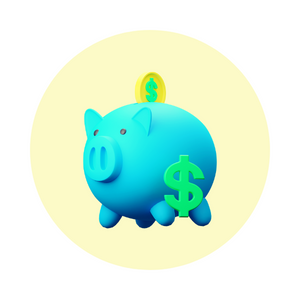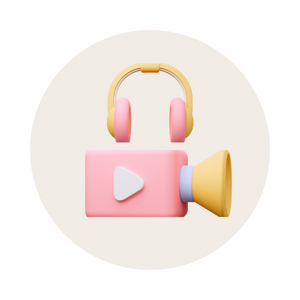
















How Experts Can Save You $100 a Month on Credit Card Debt
Expert Tips from David Boyd on Reducing Credit Card Debt If you're feeling the pinch of credit card debt, you're...
Why Every Aussie Absolutely Needs a Will Now
As Aussies, we're pretty good at planning for the future. We save for that dreamholiday, squirrel away money for a...
Transferring money from Australia – Top 5 Ways
In the past few years, Australia’s net outflow of capital has become positive. This means that Australians are investing more...
Savings tips - Ways to save money on groceries - Reduce energy bills - Petrol - Reduce your cost of living - Discover home loan mortgage repayment tips
Energy | 130+ easy ways to save on electricity and gas
It is easy to save energy around the home with a few instant tips from the Savings Room! We live busy lives rushing in and out of our homes straddling bags, tablets, phones, kid’s bags, keys and coffee cups. When we get home we’re...
Popular | 2023
How Experts Can Save You $100 a Month on Credit Card Debt
Expert Tips from David Boyd on Reducing Credit Card Debt If you're feeling the pinch of credit card debt, you're...
Why Every Aussie Absolutely Needs a Will Now
As Aussies, we're pretty good at planning for the future. We save for that dreamholiday, squirrel away money for a...
MONEY
Your Money Questions Answered
Save Money Questions
How to save $1,000 in a month?
Saving $1000 a month can be a feasible goal with careful planning and disciplined financial habits. Start by creating a comprehensive budget that outlines all your expenses and income sources, and identify areas where you can cut back. Consider reducing discretionary spending on non-essential items such as dining out, entertainment, and impulse purchases.
Additionally, look for opportunities to lower fixed costs, such as renegotiating bills and subscriptions, and finding more cost-effective alternatives for essential services. Embrace a minimalist approach by decluttering and selling unused or unwanted items, thereby generating extra income.
Prioritize automatic transfers to a dedicated savings account as soon as you receive your paycheck to ensure that the designated amount is saved before any expenses are incurred. Lastly, strive to increase your income by exploring side hustles or freelance opportunities, and consider investing any surplus funds wisely to potentially boost your savings over time.
What is the best way to save money?
The best way to save money is to cultivate a mindset of conscious spending and frugality while simultaneously prioritizing financial planning. Begin by creating a detailed budget that encompasses all your income sources and expenses, ensuring that you allocate funds for both essential and non-essential items.
Emphasize the importance of distinguishing between needs and wants, thereby focusing on fulfilling necessities before indulging in discretionary spending. Implementing strategies such as comparing prices, utilizing discounts and coupons, and opting for generic brands can significantly reduce costs without compromising on quality. Embrace the practice of regularly tracking your expenses to identify areas where you can make further cutbacks.
Additionally, consider setting specific savings goals and automating transfers to a dedicated savings account to ensure consistency. Finally, aim to cultivate long-term financial stability by investing in diversified portfolios and seeking professional advice to make informed decisions about your financial future.
How to save $10,000 in 6 months?
Saving $10,000 in 6 months requires a strategic and disciplined approach. Begin by thoroughly evaluating your current financial situation and setting a clear and realistic savings goal.
Create a comprehensive budget that includes all your income sources and necessary expenses, and identify areas where you can make significant cutbacks.
Limit discretionary spending by reducing costs on non-essential items such as entertainment, dining out, and impulse purchases.
Consider downsizing your lifestyle and finding more affordable alternatives for essential services. Look for opportunities to increase your income, such as taking on additional work or freelancing, to supplement your savings.
Allocate a specific portion of your income to a designated savings account immediately after receiving your paycheck to ensure consistent contributions.
Furthermore, explore investment options that can potentially generate passive income and accelerate your savings growth. Regularly monitor your progress and make necessary adjustments to stay on track with your savings target.
How can I save $100000 fast?
Saving $100,000 quickly requires a combination of strategic planning, disciplined financial habits, and potentially more aggressive savings strategies.
Begin by thoroughly assessing your current financial situation and setting a specific and realistic savings goal.
Evaluate your budget meticulously, identifying areas where you can significantly reduce expenses. Cut back on non-essential spending, including luxury items, entertainment, and dining out, and consider downsizing your lifestyle to reduce overall costs.
Implement a strict savings plan by setting aside a substantial portion of your income each month and automating transfers to a high-yield savings account or investment portfolio. Consider additional income streams, such as taking on a second job, freelancing, or leveraging your skills for side projects.
Explore investment opportunities with higher potential returns, but be sure to conduct thorough research and consider the associated risks.
Regularly reassess your progress and adjust your strategy as needed to stay on track with your ambitious savings target.
Can I save $10,000 in 3 months?
Saving $10,000 in 3 months can be a challenging yet achievable goal with a focused and disciplined approach to your finances. Begin by creating a detailed budget that encompasses all your income sources and expenses, identifying areas where you can make significant cutbacks.
Reduce discretionary spending by limiting expenses on non-essential items and focusing on essential purchases only. Consider implementing a temporary frugal lifestyle by opting for cost-effective alternatives and exploring free or low-cost activities for entertainment. To accelerate your savings, explore additional income opportunities such as freelancing, part-time work, or selling unused items.
Allocate a significant portion of your income to a dedicated savings account immediately after receiving your paycheck to ensure consistent contributions.
Monitor your progress regularly and make necessary adjustments to your budget and spending habits to stay on track with your savings target.
How can I save $5,000 in 100 days?
Saving $5,000 in 100 days requires a focused and committed approach to your finances. Begin by carefully examining your current financial situation and setting a specific savings goal.
Create a detailed budget that outlines all your income sources and expenses, pinpointing areas where you can make meaningful cutbacks.
Prioritize essential spending and minimize discretionary expenses such as dining out, entertainment, and impulse purchases. Consider adopting a more frugal lifestyle by opting for cost-effective alternatives and seeking out free or low-cost activities for entertainment.
Explore opportunities to increase your income, such as taking on a temporary side job or selling unused belongings. Allocate a fixed portion of your income to a dedicated savings account immediately upon receiving your earnings to ensure regular contributions.
Regularly track your progress and make necessary adjustments to your spending habits and budget to remain on target with your savings goal.
Make Money Questions
How to earn $100 a day?
Earning $100 a day can be achieved through a combination of proactive strategies and commitment. Consider exploring various online platforms that offer freelance opportunities in areas such as writing, graphic design, or virtual assistance.
Alternatively, leverage your skills and expertise by offering tutoring services, language lessons, or consulting.
Explore the gig economy by providing services such as ridesharing, delivery, or pet sitting. Additionally, consider starting a small online business, selling handmade crafts, or engaging in dropshipping.
Utilize social media platforms to promote your services or products and reach a broader audience. Focus on building a strong reputation and providing high-quality service to attract repeat customers and referrals.
Regularly evaluate your income streams and adapt your approach to maximize your earning potential while maintaining a healthy work-life balance.
How can I earn money quickly?
Earning money quickly often requires a proactive and resourceful approach. Consider exploring short-term opportunities such as participating in paid surveys, completing micro-tasks on online platforms, or offering your services for quick freelance projects.
Leverage your existing skills and knowledge to provide tutoring, consulting, or freelance services in areas where there is high demand. Explore the gig economy by providing on-demand services such as ridesharing, food delivery, or pet sitting.
Alternatively, consider selling unused or unwanted items through online marketplaces or hosting a garage sale to generate immediate cash. Keep an eye out for temporary job openings, seasonal work, or event-based roles that offer quick pay. Ensure you maintain a keen eye for legitimate opportunities and be cautious of potential scams. By remaining proactive, resourceful, and open to diverse opportunities, you can increase your chances of earning money quickly.
How we can earn money in Australia?
There are various ways to earn money in Australia, ranging from traditional employment to entrepreneurial endeavors and online opportunities.
Seeking employment in sectors such as healthcare, education, hospitality, and information technology can provide stable income, with the possibility of advancement and competitive salaries.
Additionally, exploring the thriving gig economy in Australia by providing services such as ridesharing, food delivery, or freelance work in areas like graphic design, writing, or programming can offer flexibility and supplemental income.
Entrepreneurs can consider starting small businesses in diverse sectors, taking advantage of government support programs and the country’s strong infrastructure for small businesses. Online ventures, such as e-commerce, digital marketing, and content creation, are also viable options, leveraging
Australia’s robust internet connectivity and tech-savvy population. It’s crucial to research and comply with
Australian regulations and taxation requirements to ensure a smooth and legal income-generating process.
How can I make legit money?
Making legitimate money involves engaging in legal and ethical activities that provide a source of income.
Consider exploring traditional employment opportunities that align with your skills, experience, and interests. Look for reputable companies and organizations that offer fair wages and opportunities for career growth.
Alternatively, consider freelance work in various fields such as writing, graphic design, programming, or consulting, ensuring that you provide high-quality services to build a strong reputation.
Explore entrepreneurial ventures by starting a legitimate business in a sector that interests you and has potential for growth.
Engage in online opportunities such as e-commerce, digital marketing, and content creation, ensuring that you comply with relevant laws and regulations. Avoid engaging in fraudulent schemes, scams, or illegal activities that promise quick and easy money but may lead to legal repercussions and financial harm.
Conduct thorough research, seek professional advice when needed, and prioritize building a sustainable and ethical source of income.
What are good money making ideas?
There are numerous legitimate and innovative money-making ideas that can be explored depending on your skills, interests, and resources. Some promising avenues include starting a small business, either online or brick-and-mortar, catering to a specific market niche or addressing a local need.
Providing freelance services in areas such as writing, graphic design, programming, or virtual assistance can also generate a steady income. Creating and selling handmade crafts, artwork, or unique products through e-commerce platforms or local markets can be a profitable venture.
Investing in the stock market, real estate, or other investment opportunities can yield long-term financial gains, although it requires careful research and risk management.
Exploring the sharing economy through services like ridesharing, food delivery, or pet sitting can offer additional income opportunities. Engaging in the growing digital economy through content creation, social media influencing, and online courses can also be lucrative, provided you can offer valuable and engaging content to your audience.
How to make $1,000 in 24 hours?
Making $1,000 in 24 hours can be challenging but not impossible, depending on your resources and skills.
One option could be leveraging any high-demand skills you possess by offering quick freelance services or consulting at premium rates to clients who urgently need your expertise.
You can also consider selling valuable belongings, electronics, or other items through online marketplaces or local buy-and-sell groups. Another option might be to explore the gig economy by providing high-demand, on-demand services like food delivery, courier services, or ridesharing. Additionally, if you have a large network, you might consider borrowing from friends or family with the commitment to repay the loan within a short time frame.
However, it’s crucial to be mindful of legal and ethical considerations and to prioritize sustainable financial planning rather than quick, unsustainable solutions.
SAVE MONEY AUSTRALIA
The Savings Room blog is a comprehensive online platform dedicated to providing insightful and practical guidance on all things related to saving money, budgeting, and frugal living. With a diverse range of articles and resources, the blog offers valuable tips and strategies for individuals and families looking to manage their finances more efficiently and effectively. From expert advice on budget planning and investment strategies to practical tips on reducing household expenses and maximizing savings, the Savings Room blog serves as a go-to resource for anyone striving to achieve financial stability and build a secure future.
OFFICE
Suite 1144
189 Queen St
Melbourne
Victoria
Australia
3000
RECENT POSTS
- How Experts Can Save You $100 a Month on Credit Card Debt
- Why Every Aussie Absolutely Needs a Will Now
- Transferring money from Australia – Top 5 Ways
- Finding A Better Balance: Juggling Full-Time Work, Study & Family
- Fast-Tracked Freedom: 7 Strategies for Paying Off Your HECS Debt Sooner
- Campervan Conversion Made Easy with These Tricks – Find out More!
- Accessibility Compliance
- Blog
- Contact
- Cookie Policy
- Data Protection and Privacy Policy
- ESG Compliance
- Financial Compliance (if applicable)
- International Regulations Compliance
- Legal Notices
- Logout
- My Profile
- My Profile
- Refund Policy
- Terms and conditions
- Ways to Save Money – 70,000+ Savings Tips
- Thanks for contacting the Savings Room!
- Penina Petersen -Top Finance Blogger 2023 | Australia
- Disclosure Policy
- Privacy Policy
- Terms and Conditions | Legal & Website Policies
© 2023 Savings Room


 YOU
YOU





 Money
Money





 FOOD
FOOD





 FAMILY LIFE
FAMILY LIFE




 HOME & GARDEN
HOME & GARDEN







 ORGANISE
ORGANISE

 EVENTS
EVENTS





 LIFESTYLE
LIFESTYLE





































